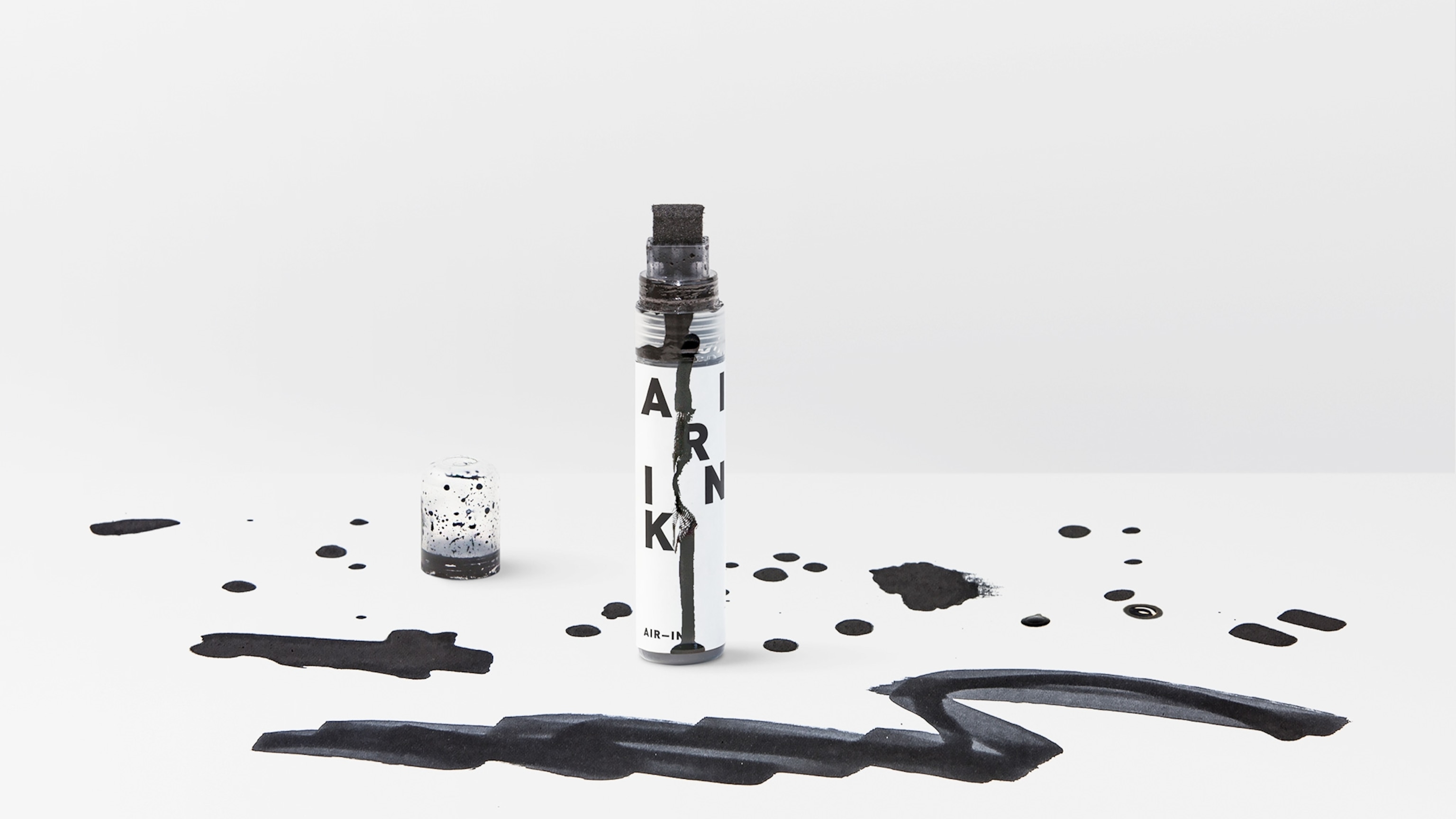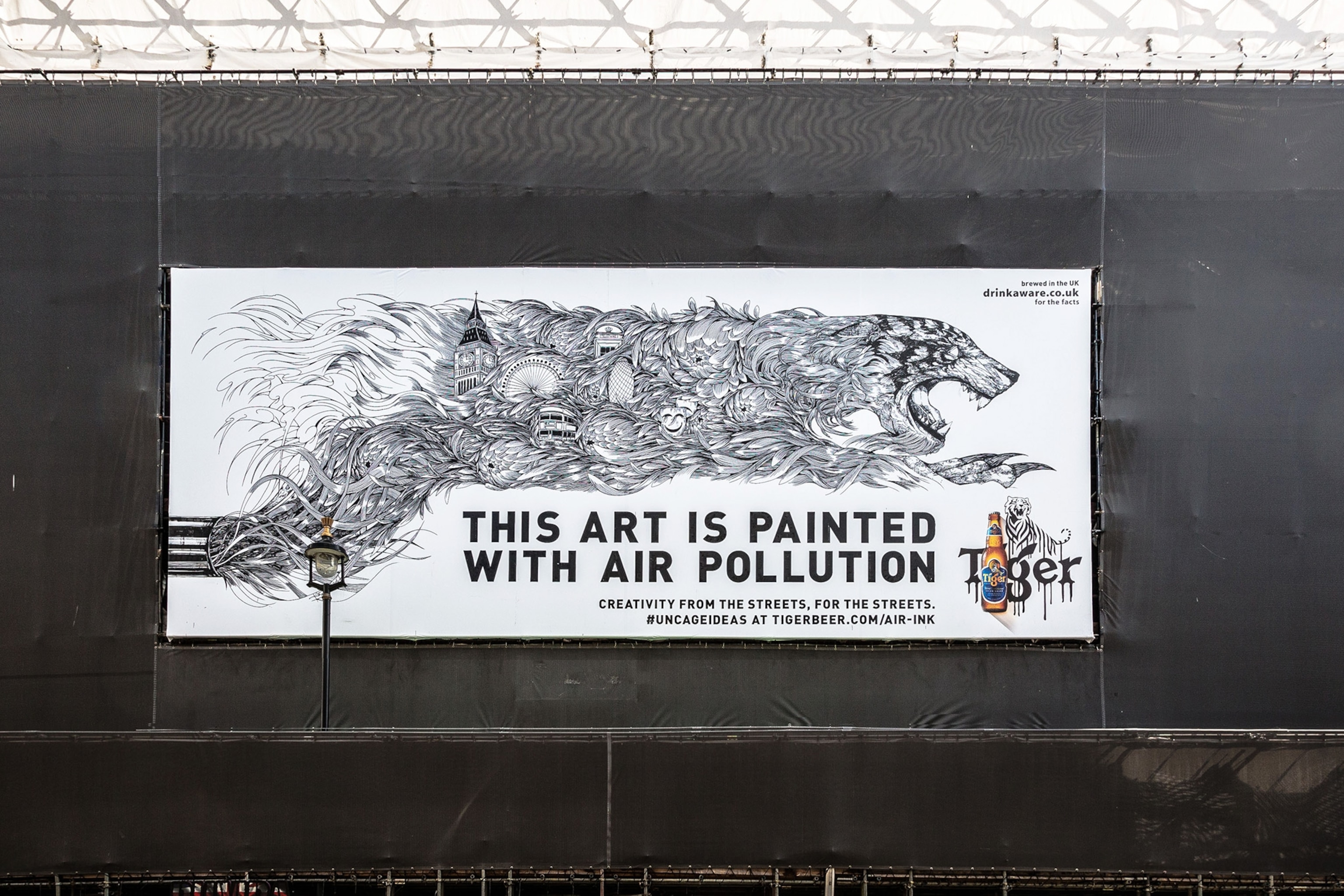
How Air Pollution Is Being Turned Into Ink
The soot that comes out of a tailpipe is being used to create art.
Anirudh Sharma was at a conference in India when he noticed black particles accumulating on his white shirt. The specks settling on him were from pollution in the surrounding air.
Byproducts from burning fossil fuels such as gasoline and coal are causing health problems and climate effects around the world, especially in India's growing cities. In that moment a few years ago, though, Sharma saw the pollution particles as something simpler: A coloring agent.
He went back to MIT Media Lab in Cambridge, Massachusetts, where he was a graduate student focused on augmented reality, and began working on an idea to turn carbon pollution into ink. Using candle soot to start, he came up with a prototype. After finishing his master's degree, he went back to India and in 2016 co-founded a collaborative called Graviky Labs to continue working on Air-Ink and other ideas.

Everyone on the initial Graviky team was from Delhi, one of the most polluted places in the world, says cofounder Nikhil Kaushik.
"We understood what it means when somebody says pollution," he says. "We were not ignorant of what pollution is, the problems it causes. That helped us a lot."
They developed a device that can be fitted onto the exhaust pipe of a car or portable generator and collected the soot that forms from burning diesel fuel. By mixing the fine black powder with solvents, they produced ink that then went into bottles and markers.
Kaushik says Air-Ink has a dual benefit: "It’s not just that we’re recycling that material into inks. What we are also doing is replacing the carbon black that otherwise would have been used to make black inks." Manufacturers typically use the soot known as carbon black in rubber, ink, paints, and carbon paper.
After posting their endeavor on Kickstarter earlier this year, the team brought in $41,000—nearly three times the donations they sought to start producing Air-Ink in larger quantities. Through a sponsorship from a beer company, they'd already begun distributing the ink to artists, who created public pieces in London, Singapore, and other cities.
"At the beginning, I thought, 'It’s just another gimmick,'" says Kristopher Ho, an artist based in Hong Kong who was one of the early testers. "But after I tried the markers, I realized they are actually pretty good." He says the markers are thicker than traditional ink, which makes them perfect for painting.
The team at Graviky has produced about 1,000 liters (264 gallons) of ink over the last 12 months, Kaushik says. Graviky estimates that 30 milliliters of the ink captures 45 minutes of tailpipe pollution. The team is working to bring down the cost of the products, which also include ink for screen printing. Getting the ink into computer printer cartridges, he says, would be the "holy grail," but it's hard for smaller players to break in.

Then there's the matter of collecting the carbon from the tailpipe devices—the largest number they've deployed is about 75, Kaushik says. He envisions small "ecosystems" around truck fleets, for example, where hundreds of delivery trucks are coming back to the same place and could easily drop off their carbon, or gas stations where drivers could make deposits in a "carbon bank."
The bank moniker is intentional, pointing to carbon's value. "It's a human concept that this is a waste material," Kaushik says. "We believe that in nature, nothing is a waste. Everything has a value to it."
The team at Graviky is also working on pollution sensors that can help people gauge air quality where they live. The staff simply work on concepts they like—projects need to have a social impact and make sense commercially, Kaushik says, but income isn't the driving factor. Like the artists they've met, he says, they let passion guide them first.
"If you're doing something that makes sense to people, the money just comes. The biggest challenge is, can you stick to an idea?" he says. "That's the more important thing, rather than worrying about the money."





